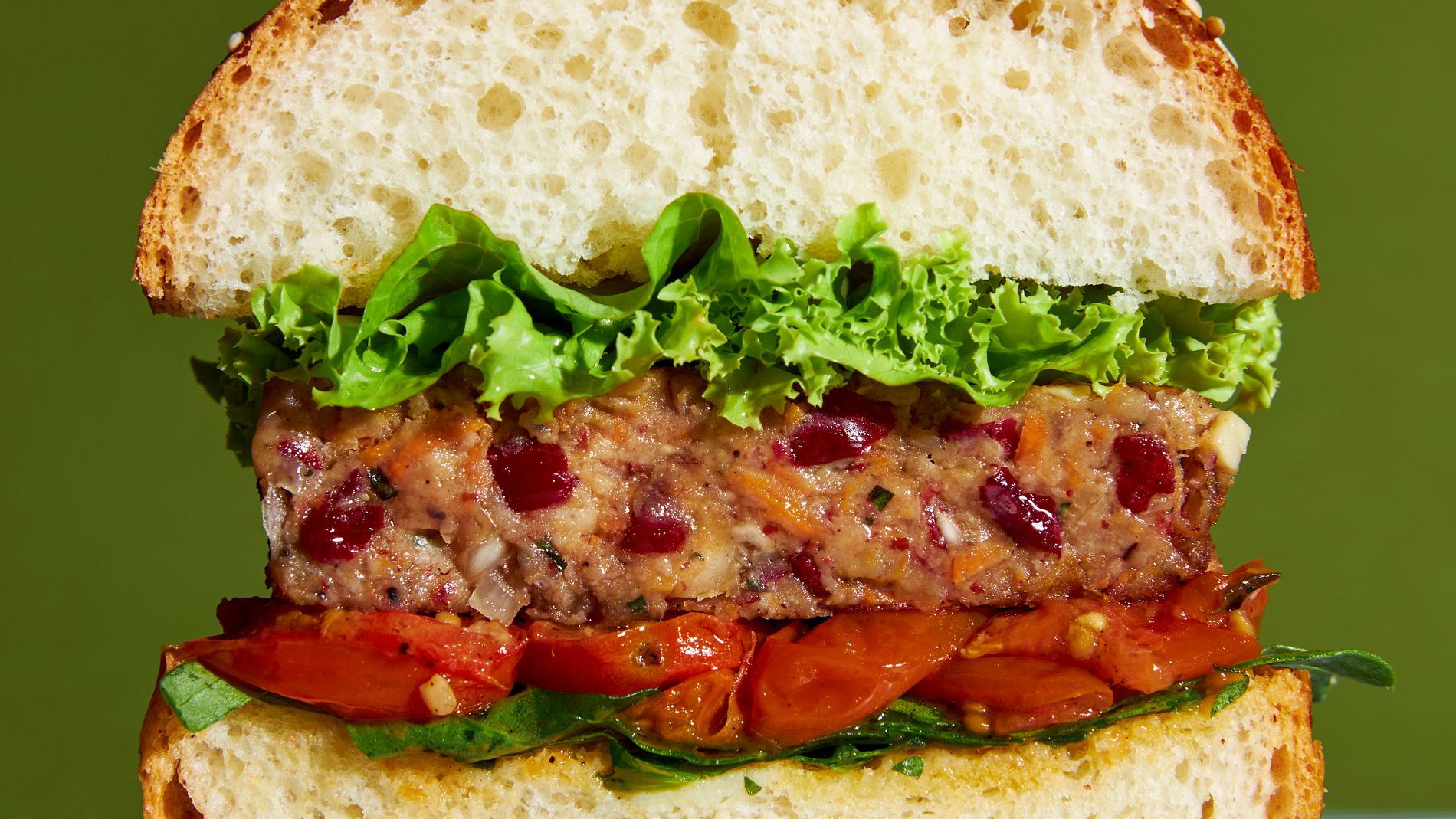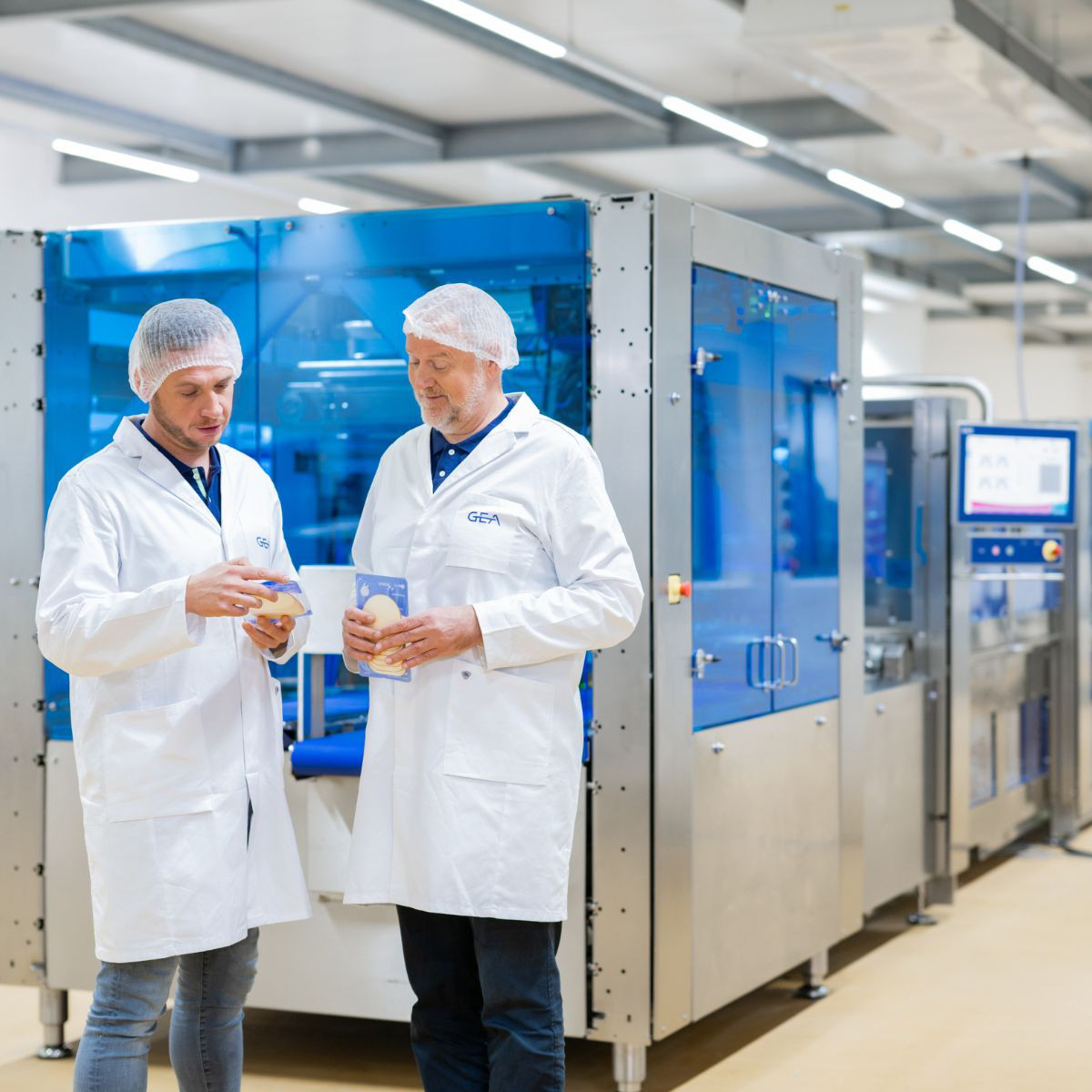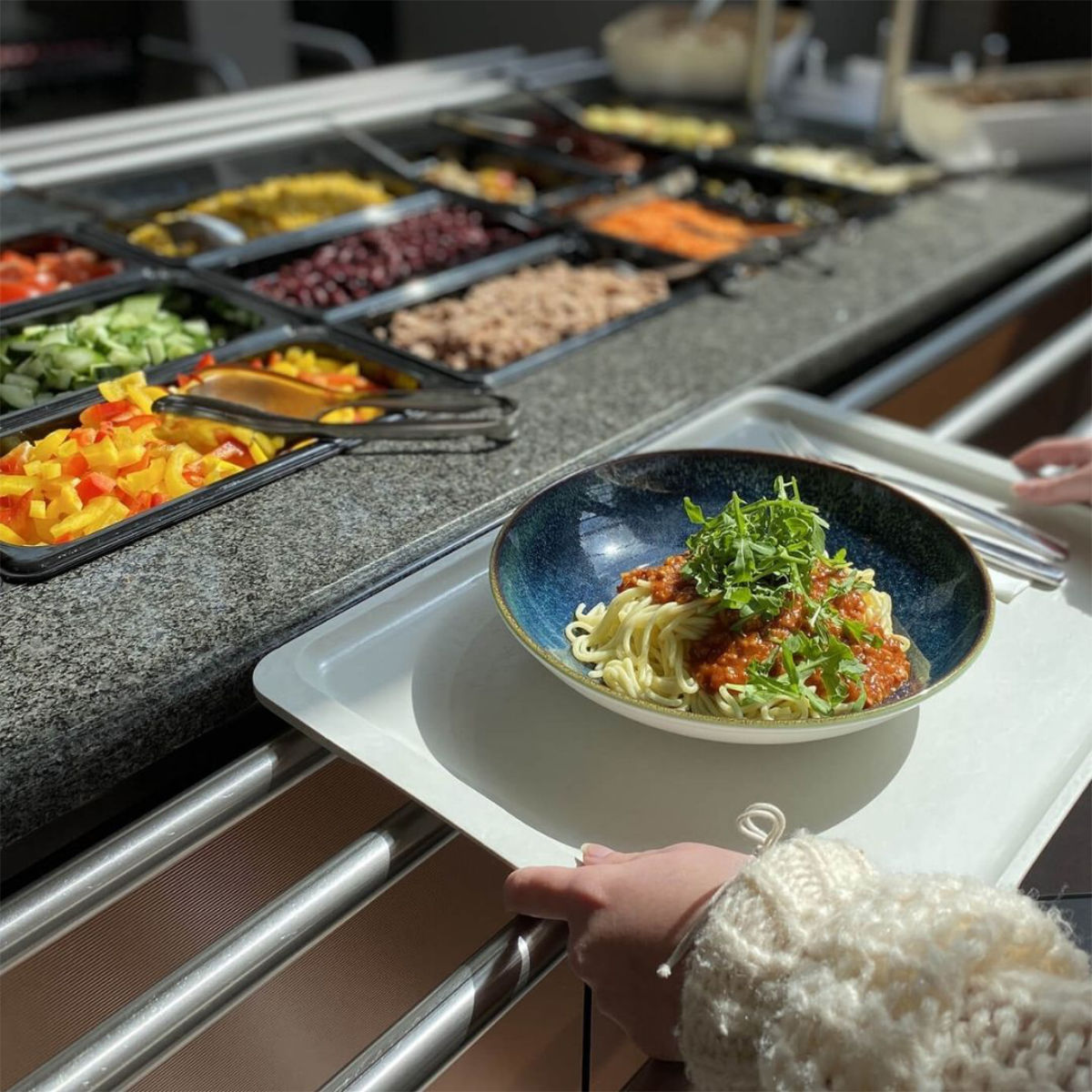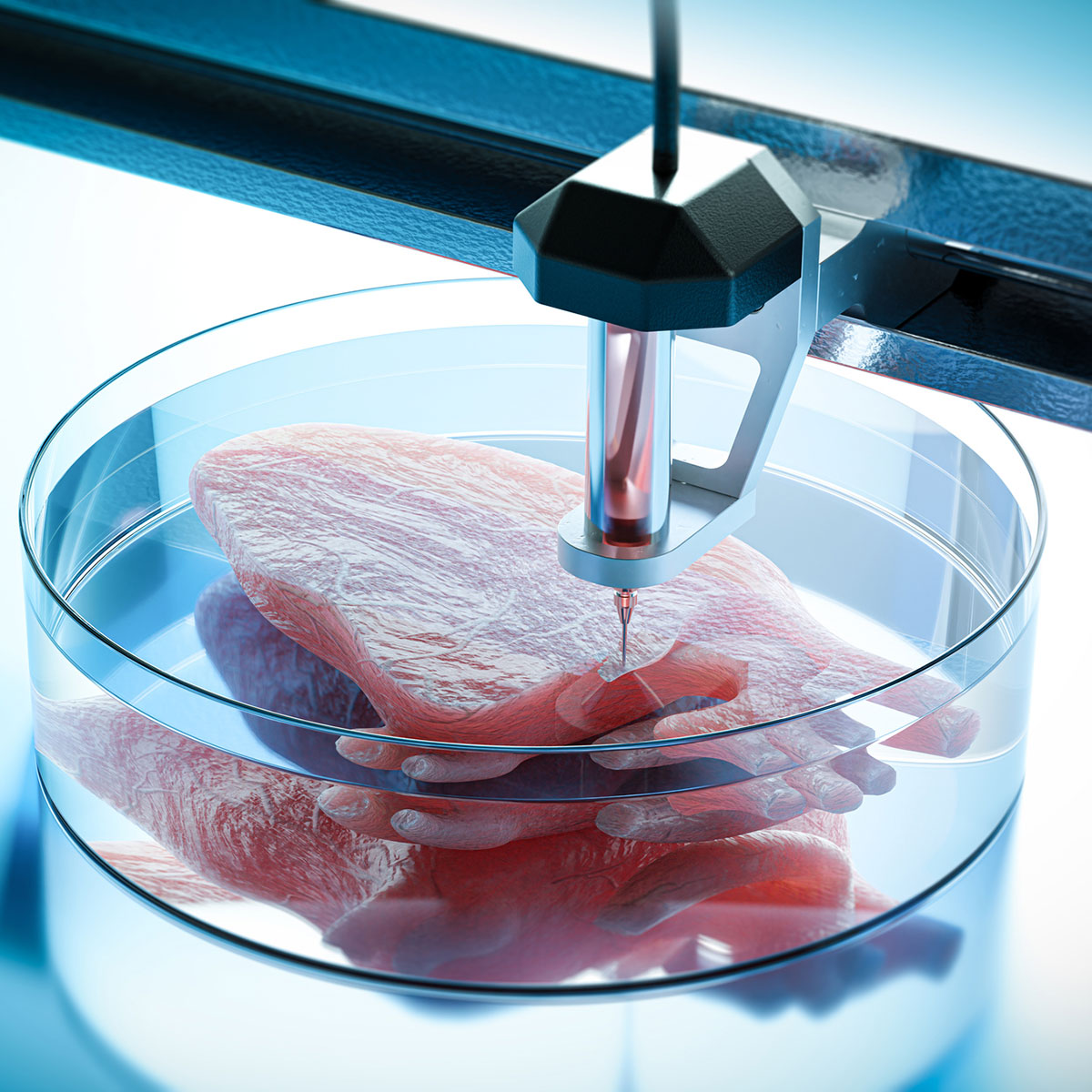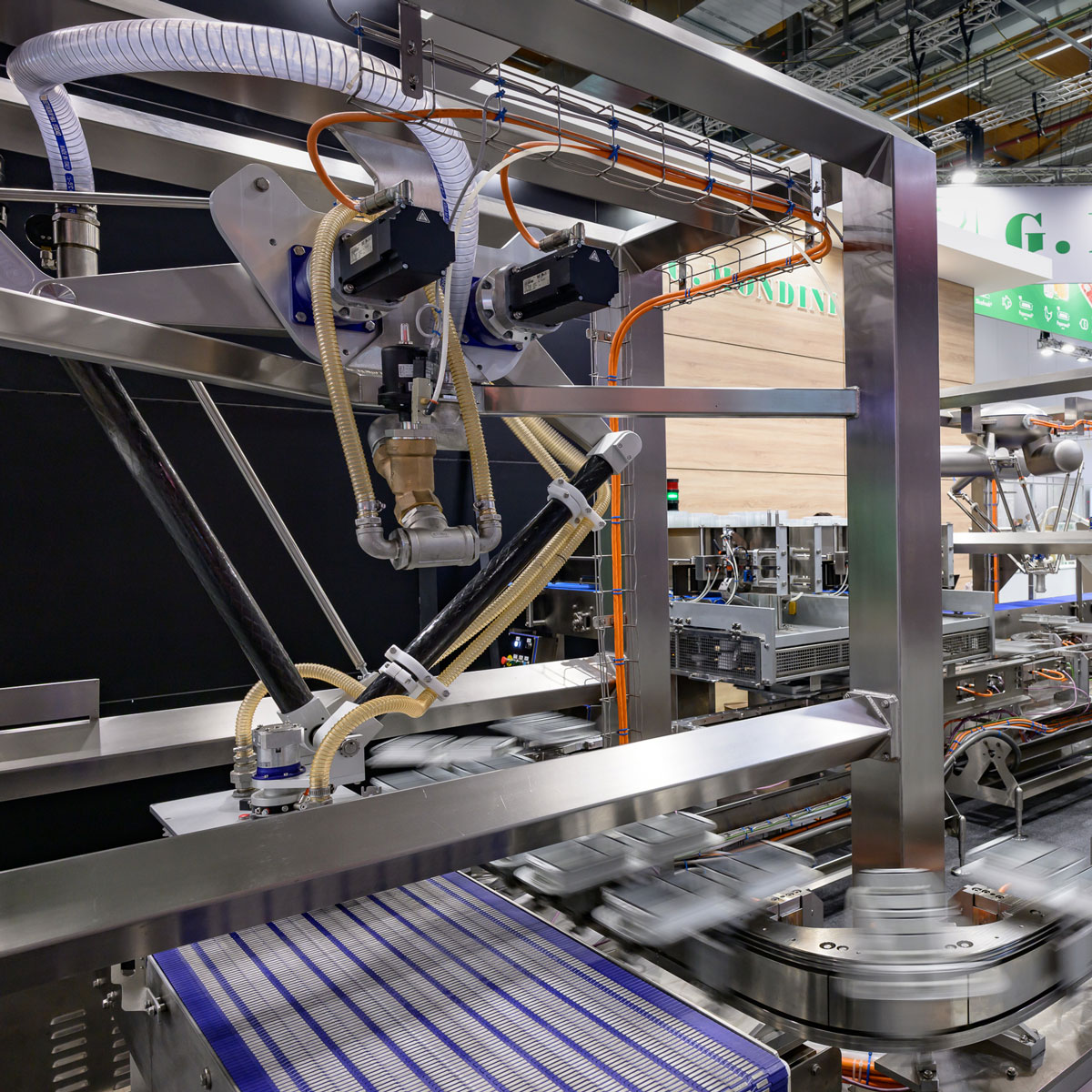Reading time: 5 minutes
The story begins two million years ago. Prehistoric humans like Lucy are said to have started eating meat – which, according to a common theory, slowly increased the brain volume of hominids. It took some time before it was proven that the brain's protein requirements could be met by other means.
Meat alternatives have been around forever

Tofu was probably invented during the Han Dynasty in China around 150 BC. The wheat protein seitan has been on the menu in the region even longer. Today in Mexico, corn tortillas and beans still provide all the essential amino acids. In South America, it is beans and rice, and in Ethiopia, lentils and the ancient grain teff, which has provided people with protein since time immemorial. In India, ground rice and urad beans, which are related to mung beans, are fermented into a dough that is used to make steamed idli cakes and crispy dosa pancakes.
In today's supermarkets, the metres of shelves filled with industrially produced meat substitutes, in which, for example, vegan chicken nuggets are often sold out, show a trend. A recent study by the opinion research institute YouGov, in which 2,105 people were surveyed, also shows the extent to which the willingness to expand the diet to include meat substitutes has grown in Germany. 49% of those surveyed are in favour of alternatives to meat, fish, eggs and dairy products. Around a third of those surveyed want to eat plant-based meat alternatives more often, while 27 % say they already do so with dairy products.
Reasons for not eating meat vary
Moral or ethical reasons are cited for not eating meat, the desire to eat ‘light’ and low in fat – but also the conviction that eating less meat will improve the ecological footprint. The proportion of the third group has grown in recent years.
The rapidly growing world population – it is expected to increase from 8.2 billion (2024) to 10.4 billion by the 2080s – is also creating pressure to act on nutrition. With today's consumption of resources, it will not be possible to supply the world's population with proteins.
The demands on nutrition are growing from all sides: it should be digestible, healthy and tasty, easily available, as well as ethically correct and climate-neutral. To meet these requirements, the agrarian production chain must change. The food industry is thus facing the greatest upheaval in its history – with new raw materials, technologies and perhaps also products that still seem futuristic today.
A completely new market environment
Some traditional manufacturers are responding to social trends by diversifying their product portfolio in order to remain competitive and continue to grow. Others are focusing on aspects such as quality, regionality and sustainability in the meat they offer. For agricultural land, a greater focus on plant-based, cultured and fermentation-based proteins is leading to a shift from intensive agricultural practices to approaches that help restore biodiversity and create more space for renaturation.
Whether they come from the traditional meat industry, a young development start-up or a venture capital investor, the same applies to all market participants: investments in alternative proteins are considered attractive because they have a greater impact on the climate than investments in other sectors.
Not an either/or, but an intelligent combination
The realisation that new approaches must be taken to ensure the supply of protein across the globe is widely shared by all market participants. The current producers of animal proteins play a crucial role here because they handle the largest volumes. After all, the contribution of meat as a source of protein to the supply is 80 times greater than that of substitute products.
The future of protein supply is not an either/or proposition, but an intelligent combination of different approaches that combines sustainable, economic and technological advantages.
The new industry portal Foodtech Now! is aimed at the entire protein industry, promoting diversification, networking and partnerships. It addresses both traditional meat producers in their constant efforts to improve quality and sustainability and optimise processes, and the growing global market of suppliers and developers of alternative proteins in the three manufacturing areas of ‘plant-based’, ‘cultivated’ and ‘fermentation’.
There's more to meat than protein
In some ways, animal proteins continue to be the benchmark, for example when meat is imitated with substitute products such as ‘vegan mince’, a bestseller among meat alternatives that consumers also appreciate for their high level of convenience. For traditional manufacturers, these products often offer the advantage that they can be produced using existing technology.
From the point of view of many consumers, the substitute products cannot always match meat in terms of flavour, its importance as a cultural and traditional food, and its indispensability in culinary delights. After all, meat is more than just a source of protein.
Research has now also made dreams come true, such as cultivated ‘real’ meat. With the help of DNA from a calf, for example, it is grown in bioreactors in theoretically unlimited quantities and is confusingly similar to conventional animal meat.
Half of the companies are repositioning themselves

The latest ‘Meat and Meat Products Industry Echo (Branchenecho der Fleisch- und Wurstwarenindustrie)’ (2024) shows that half of all companies in Germany are working on a realignment – through alliances, investments in automation and/or a focus on sustainability. This survey of the 100 top-selling companies in the meat and sausage industry shows how many companies are already taking the opportunity to emerge stronger from the transformation phase.
According to a recent report by the international institute Technavio (2024), the growth drivers of transformation also include new product launches in the meat substitute industry. The report cites the relatively high price of meat substitute products compared to conventional meat, as well as bottlenecks in the supply chain, as challenges. The institute predicts continued significant growth in the soy-based segment due to meat-like product characteristics in terms of consistency and taste, as well as nutritional advantages.
Europe is expected to contribute 40 % to global market growth during the forecast period to 2028, according to the Technavio report. The market in Europe is driven by the popularity of plant-based protein products, increasing health awareness and a growing number of product launches and investments.
The integration of meat and dairy product manufacturers into the new market is well advanced. The major brands, but also many medium-sized companies, have managed to offer consumers a wide range of options for adapting their own nutrition to the new times with high investments and successful innovations.
From the Stone Age to diversity and into the future
The evolution of the protein market impressively demonstrates how human nutrition has developed from its beginnings in the Stone Age to today's diversity. Thanks to modern technologies, new raw materials and a growing awareness of sustainability, more and more possibilities are emerging for individuals to shape their own nutrition. The transformation of the market is in full swing – driven by innovation, consumer interest and global challenges. In the future, the focus will be less on the contrast between different protein sources and more on intelligent solutions that reconcile health, enjoyment and the environment. This development opens up a wide range of opportunities for all participants along the value chain – from production and processing to distribution – to ensure a sustainable protein supply for everyone.
Always up to date: trends and expertise at Foodtech Now! and the trade fairs
Foodtech Now! now offers the opportunity to find out about current developments all year round. Personalisable content tailored to individual interests enables a targeted exchange of knowledge. The central platform keeps you up to date on the latest trends and innovations in the field of animal and alternative proteins, and offers inspiration and international impetus.
The trade fairs of the industry regularly bring together all market players and enable them to network directly with experts, discover innovative products and discover current industry trends.
Take advantage of these diverse offers to stay up to date and optimally adapt your business strategies to the changing protein landscape.
